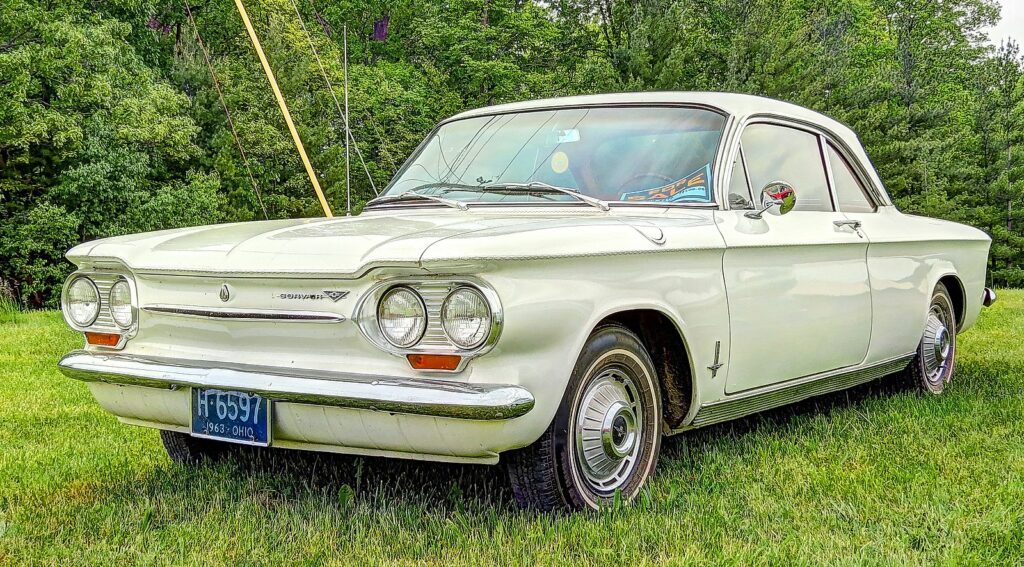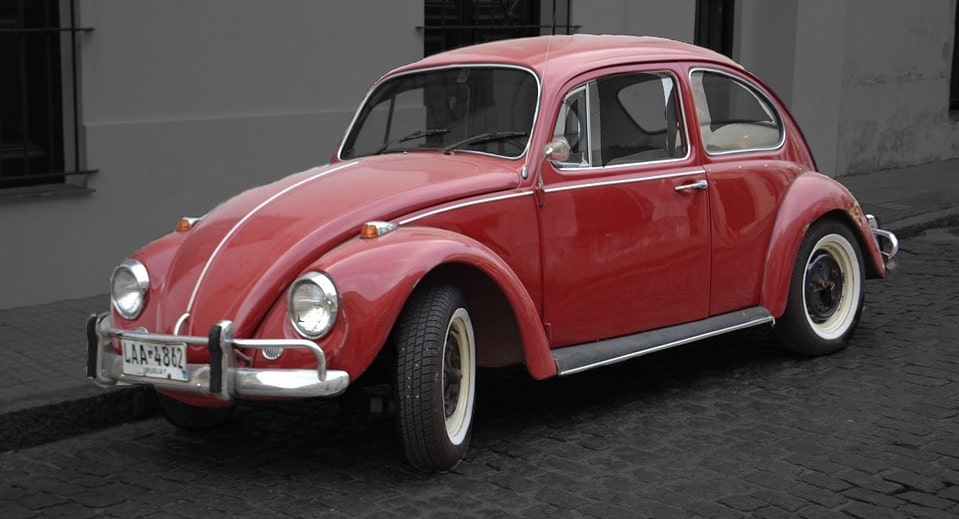Are Classic Cars Fuel Efficient?
Yes and no. It depends on the car and what you consider a classic. There are numerous fuel-efficient classic cars from the post-OPEC era; especially the 1980s. However, you can rule out most big 1960s and 1970s V8s (darn) and most full-size American sedans from that era.
Fuel-efficient muscle cars? Forget it. People will argue with me about this, and the line usually goes something like this:
"You don't know what you're talking about bro. My brother's 1969 DMC Impala Fordster had a 940ci V8 and he got 35 mpg stock bro."
Yeah, I don't buy it. Sure, some people manage 25+ mpg in old V8 muscle cars, but most never achieve anything close to 20 in real-world conditions. Anecdotes about miraculous mileage aren't helpful if you're looking for an old-school daily driver that'll reliably cut costs at the pump.
Seven Classic Cars that Get Good Mileage
Some well-known classic cars get good gas mileage. These cars get between 15 mpg around town to upwards of 40 mpg on the highway. Are they slow? Mostly, yes. But a car doesn’t have to be fast to be fun. Here are seven of our favorite fuel-sipping classics that won't break the bank.
7. Ford Falcon

A 1960 Ford Falcon sedan [Rex Gray]
Average Fuel Economy: 19-25 mpg
The Falcon was Ford's entry-level economy car of the 1960s. It was basically the Honda Civic of its day. The 1960-1963 Ford Falcon was available as a no-frills, basic car with interesting styling and an efficient 95-horsepower 144ci "Mileage Maker" straight-six engine.
As far as 1960s classics go, the Falcon is about as efficient as it gets. It has one of the smallest straight-six engines around. According to owners, these cars can get between 19 and 25 mpg. The engine is usually mated to a three-speed manual column shift (three on the tree) which is surprisingly easy to use and a fun novelty for a daily driver.
Parts are widely available for the Falcon, and there's a sizeable following for these vehicles in the classic car community. Plus, you can still find them for reasonable prices on the used market. In other words, you won't pay 60s Mustang prices for a 60s Falcon.
6. Chevrolet Corvair

An original 1963 Chevy Corvair coupe [Don O'Brien]
Average Fuel Economy: 19-22 mpg
Here's the car that's responsible for many of America's earliest auto safety regulations. Ralph Nader's "Unsafe at Any Speed" focused on the 1960-1964 Corvair and its… eh… unique handling characteristics and mid-engine design. However, the base-model 60-64 Corvair gets almost 20 mpg, and some variations get more than 20 mpg on the highway.
It's not that the Corvair was inherently a "bad car." It had the same kind of suspension as the VW Beetle. But at a time when Americans were used to heavy, front-engine cars, the swing-axle design and weight distribution made this car prone to rolling.
Safety issues aside, the Corvair can be an excellent daily driver in the right hands and a gas-saver as well. The Corvair came with a strange but efficient air-cooled 2.3L flat-six engine and a three or four-speed manual transmission. A two-speed Powerglide auto was also available, but the manual models get the best mileage.
5. Volkswagen Beetle

A typical 1960s Volkswagen Beetle
Average Fuel Economy: 21-27 mpg
Yes, of course. Are you surprised? That lovable click-clacking economy car is a fuel-efficient daily driver. The original Volkswagen Beetle came with a few different engines, but we believe the "1500cc" 1968 and up models are your best bet. That said, they're all pretty great.
The 1968 Bug came with a 53hp 1493cc flat-four engine. It's not a fast car by any stretch of the imagination, but it gets out of its own way. And if you want a little more power, there are infinite aftermarket options available.
Owners report an average fuel economy of between 21 mpg and 27 mpg, and some manage upwards of 29 mpg under the right conditions. A good running Beetle with a properly tuned carb and the correct timing is an excellent choice for efficiency.
4. Chrysler K-Car

A well-preserved Plymouth Reliant K-Car
Average Fuel Economy: 21-40 mpg
Lee Iacocca's beautiful, brilliant, boxy little dream: the Chrysler K platform. These vehicles were America's transition from large, absurd land yachts to small, efficient economy cars. The 1981-1988 K-Car was a front-wheel-drive four-cylinder car with the styling and handling of a 79 Caprice—and the gas mileage of a modern Toyota Corolla.
Examples of the K-Platform include the Chrysler LeBaron, Dodge Aries, and the Plymouth Reliant. They came in coupes, sedans, convertibles, wagons, and even minivans. There's a K-Car for everyone, as long as you can still find one on the market.
Owners report that the typical 2.2L Chrysler K-Car with a 3-speed auto gets somewhere between 21 and 26 mpg, and the 2.5L auto gets between 22 and 26 mpg. The 2.2L K with a 5-speed manual gets 30 mpg or better.
Additionally, Allpar reports that the 5-speed Dodge Aries and Plymouth Reliant got around 26 mpg city and 40 mpg highway—which is astounding.
3. Ford Fairmont

A typical 1978-1983 Ford Fairmont sedan
Average Fuel Economy: 22-29 mpg
The 1978-1983 Ford Fairmont was the kind of car that the Chrysler K-platform was designed to replace—and did. The Fairmont was a lesser-known member of Ford's Fox platform (yes, that Fox platform) and a common "average" economy car of the late 1970s and early 1980s.
This is the car you want if you're looking for a rear-wheel-drive "floaty boat" straight from the dreary Malaise Era. Despite the reputation of the 1970s domestic auto industry, these cars have a lot going for them. They're comfortable, easy to drive, and part of a growing collector niche.
The Ford Fairmont came with several engine options (including a 302 Windsor V8), but the most common was the ancient 200ci (3.3L) Thriftpower inline-six. It's pretty slow and probably doesn't make 100hp.
But before you start singing the one barrel blues, consider this: the 3.3L Fairmont got an EPA estimated 22 mpg city and 29 mpg highway. That's a lot for a big rear-wheel-drive car, and some owners report real-world mileage above 30 mpg.
Before everyone figured out that it was a Foxbody, you could get an old Fairmont for $1000 or less. These days, you'll pay a lot more—but at least you can drop in an LS motor if fuel prices ever go down again.
2. Ford Model A

A restored 1929 Ford Model A [Spurzem]
Average Fuel Economy: 14-25 mpg (ish)
How far are we going back? Way back. The 1927-1931 Ford Model A is about as old as usable daily drivers get. Unlike the Model T (which has three pedals that don't do what you think they do), the Model A has a clutch and a gear shifter that most drivers would recognize. And a gas pedal, which I guess is important too.
Additionally, retrofit kits are available to add a highway "overdrive" system, which helps the Model A keep up with modern traffic.
Due to its relatively light weight and small engine, this iconic classic gets surprisingly good fuel economy for a 90-year-old car. That said, it's a bit more challenging to find a consensus on the numbers. Ford Model A gas mileage reports vary significantly. But compared to other classic cars, these higher MPG claims seem a lot less dubious.
Forum members have discussed Model A mileage in length, and most get somewhere between 14 mpg (on the low end) and 25 mpg. The average mileage for long, steady-speed trips appears to be around 18 mpg to 20 mpg.
The Model A is one of those cars that needs tinkering for optimal results. Many of the original tips and tricks to improving mileage were never written down, so it's best to join a forum and talk to the guys who know these cars inside and out.
1. Mercedes 240D

Euro-spec Mercedes 240D [Source]
Average Fuel Economy: 28-30 mpg
What is the Mercedes 240D? It's a slab of iron with a tractor motor. It's an absolute unit of a car and probably the most "modern feeling" classic on this list. Mercedes was ahead of its time with the W123 platform—the interior layout is practically indistinguishable from cars made in the early 2000s.
Oh, and it's a diesel. People sometimes claim that the 240D and the 300D are why diesels got a bad reputation in the US. Nope, the Olds 5.7 diesel did that. The 1980-1984 240D is very reliable and efficient.
The 240D was a step below the well-known 300D. Fit and finish were similar between the two vehicles, but the 240D typically came with manual windows and a manual transmission. And trust me, you need the manual transmission in this car.
"Sluggish" is an appropriate word to describe the 240D. It came with a four-cylinder 2.4L non-turbo diesel engine which made around 70hp. It wheezes from 0-60 in 22 seconds, which is pretty horrifying. But don't dismiss this car quite yet.
Despite its anemic performance, the 240D is an excellent car overall. You get air conditioning (which is probably broken) and four-wheel disc brakes, along with a combined fuel economy of 26-28 mpg. It can do better than 30 mpg on the highway, and some owners report higher numbers.
Title Image Source: Dave_7


















